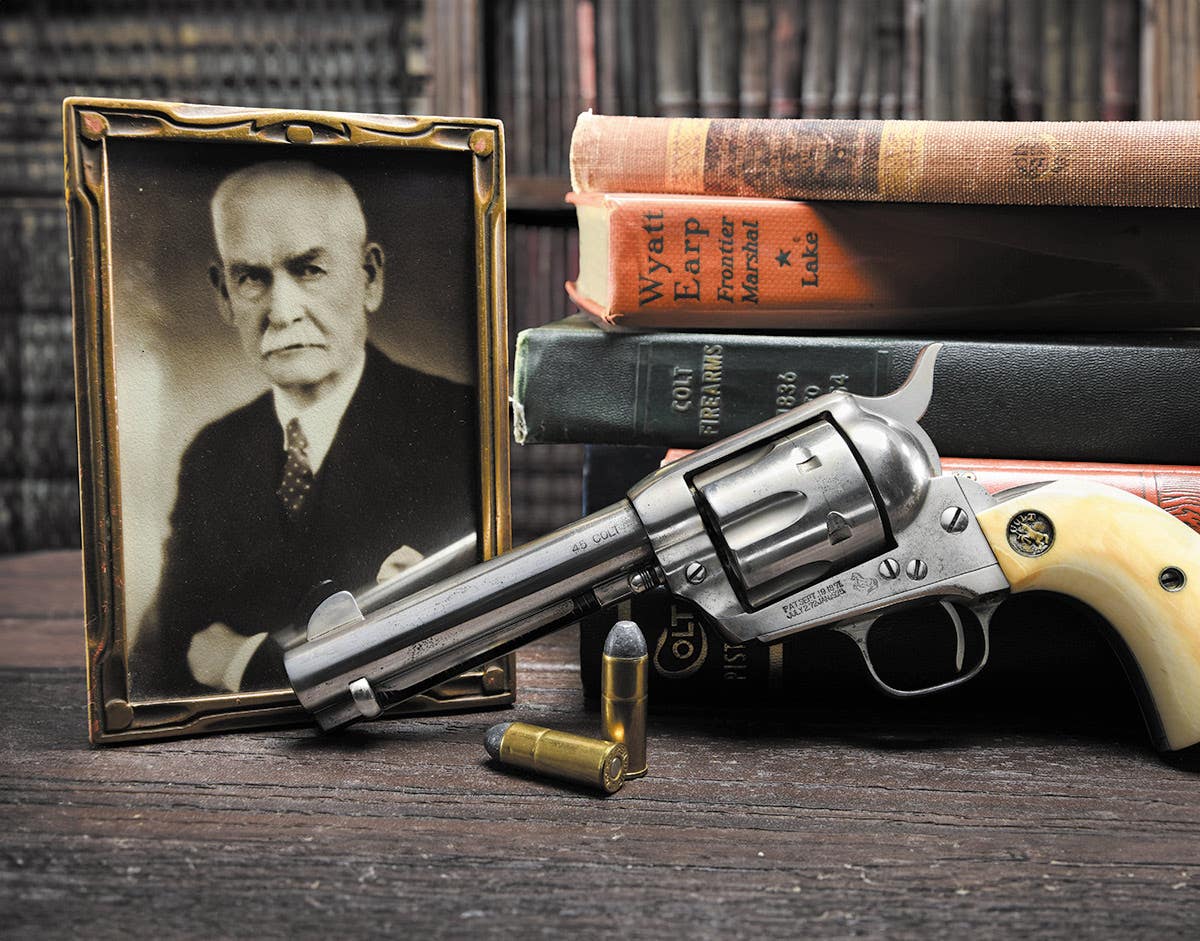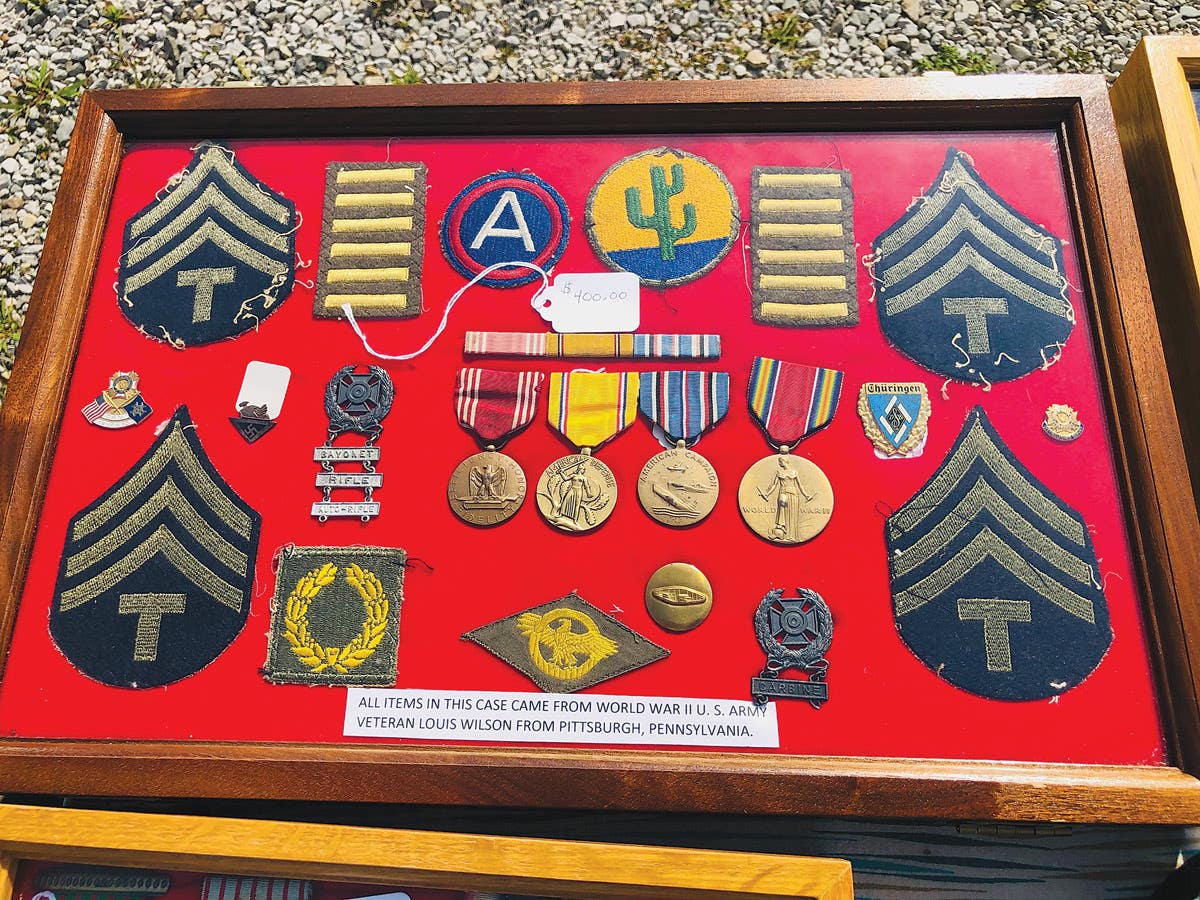Top 5 Ways to Destroy Your Collection
Greetings,At the recent Iola Military Vehicle Show, I was reminded that historic military vehicle collectors have a better understanding of the value of “unrestored” than collectors of militaria. There is…
Greetings,
At the recent Iola Military Vehicle Show, I was reminded that historic military vehicle collectors have a better understanding of the value of “unrestored” than collectors of militaria. There is little question in the mind of a vehicle collector when they drag a virtual time capsule out of a forgotten barn or garage: the original, unrestored state of the vehicle makes it more valuable than if they were to restore it.
This scenario has been repeated many times in the classic car world to substantiate the claim: An unrestored, original condition Daytona Cobra Coupe found, unmolested since the day it was put away after its last race, far out-paced its fully restored brethren at auction. The same can be said for the many original condition muscle cars that go across the block each year versus fully restored examples of the same vehicles.
Two factors enter into the phenomena: Collectors like to believe they are the “first” to handle, see or consider to restore an item. And second, simple supply and demand. The supply of restored classic vehicles has far outpaced the supply of original condition vehicles.
And yet, with such obvious examples playing out each year, collectors of militaria just seem to miss the point. Too often, after a collector finds a helmet, uniform, gun or some piece of accoutrement, their first and foremost reaction is “I gotta clean it...I must try to ‘restore’ it.” They just don’t seem to understand, “the moment you mess with it, you have devalued it.”
Top Five Ways to Devalue Your Collection
Collectors are ingenious when it comes with tampering with historic military relics. Many even keep a “tool kit” of “restoration materials” handy to address any opportunity to deflower an item. Here are some the worst things that one can do:
1. Rub ‘preservative’ on leather.
Conservation advice and techniques are like medical advice ... everyone thinks they have the answers, but very few actually go through the efforts to get the degree to practice it. And like home remedies, it doesn't stop the untrained from practicing it--always with the best of intentions and sometimes with good results, but often, causing the death while treating a symptom.
Leather is the hide of a dead animal. It was tanned to slow the natural decay. There is nothing you can smear on it that will slow that process. In fact, treating leather will often give the appearance of “renewal” when it is actually speeding the process of decay.
Simply stated: Leather treatment FOR PRESERVATION does not exist. Ever wonder why one company whose product is often touted as a “preservative” has a DUCK as its logo? It isn't because ducks are great leather preservationists but rather, because it was originally developed many, many years ago as water repellant—a chore it performs superbly. It was part of a late 1980s-early 1990s marketing effort to broaden the company's market when they hatched the notion that they could sell the stuff to museums. The formula didn't change, just the marketing effort.
If you want to slather your leather with magic goop, that is your own business. Other than speeding up the natural deterioration of the leather, the only harm it does is to the monetary value. A knowledgeable collector / dealer will pay less for something that has been treated than an item that is left in its original state.
The best thing you can do for leather? Clean it with a slightly damp cotton rag. Display in a moderately humid setting and don’t smear it with any sort of goo! If you are going to store it, wrap it in unprinted newsprint or similarly acidic paper. Leather requires a small amount of acid. Acid-free paper actually leaches the natural acids from leather thereby accelerating decay.
2. Remove or add insignia to uniforms
Collectors just can’t resist the urge to “tweak” a uniform. If one buys a WWI U.S. tunic that is missing a collar disk, he or she just can’t rest until they replace the missing insignia. It might increase the value of the tunic, but it destroys the historical integrity. Of course, some go too far and simply upgrade a tunic with the addition of more valuable insignia, and that is just plain fraud.
3. Display in direct sunlight
I find it hard to believe that people still do this! It’s the 21st Century folks. Shut your curtain, pull the shades and buy some UV filters. Duh! Sunlight destroys things. Don’t hasten the destruction of historic artifacts by exposing them day after day to the sun’s rays.
4. Leave Moth-Proofing to Moth Balls
Good grief, do people still think mothballs deter moths? One only has to visit a military show and catch a whiff to know that many do believe in moth balls.
Mothballs used to be the most common way to guard against moths. Originally made of napthaline, mothballs are now made from paradichlorobenzine, both of which can be dangerous, especially to children and pets, who might eat the mothballs because of their sweet taste.
It's thought that paradicholorbenzine is a likely carcinogen, and exposure to very high doses can cause dizziness, headaches and liver problems. Mothballs are most effective when used in an airtight container, but the container can't be plastic because the chemicals in the mothballs can cause plastic to melt into the wool.
The most important thing you can do to prevent moths is to keep your storage area clean. Using air-tight storage will be a big help, but also regularly vacuum the room where your uniforms are stored, making sure to clean any woodwork and wooden furniture in the room as well. Moths love to get into the nooks and crannies of wooden furniture and into the carpets, so regular cleaning may help keep them from getting to your stash. Remember, too, to clean behind and under your heavy pieces of furniture, and clean heating vents and heaters as well. Moths love dark, warm places, so that's where they will congregate.
Pheromone traps are available for some moths that are attracted to wool, which can also be effective to repel moths and let you know if moths are present. These traps are available at hardware stores. Check regularly to make sure there's no evidence of moths in the traps.
And finally, fumigate your collection. This isn’t as hard as it seems. Once a year, I haul all my uniforms to the garage, hang them from the rafters and touch off a bug bomb. A day later, I haul it all back into my collection room with the knowledge that any dormant larvae probably bit the dust.
Want a sure way to have moths ruin your collection? Leave prevention just to the mothballs.
5. Don’t use permanent “coatings”
Permanent coatings are things that can’t be reversed such as laminating documents or lacquering helmets (do people still do this? Read on!). Again, this would seem to be a self-evident bit of advice, but just last month, I ran up against it, firsthand.
A dealer offered for sale a WWI helmet with a Tank Corps insignia on the front and a 65th Engineers insignia painted on the side. To a Tank Corps collector, this is a significant relic as the 65th was the first unit in our nation’s history to be converted to a tank unit. They were the first tankers.
I expected to pay nearly a thousand dollars for it. However, it was sold to me for only $395. I asked the dealer if he was certain about the price. He said he was dead-certain and wished that he could charge me more, but the previous owner had lacquered the shell, thereby dulling the original color and insignia; cleaned it with a red cloth while the lacquer was still tacky thereby leaving a fine “fur” coating; and had rubbed Pecard lubricant on the chin strap, darkening the leather but also promoting the growth of powdery white bloom. Essentially, the helmet—a dramatically significant document of Tank Corps lore—had been defaced by a collector. The bottom line? A helmet that should be worth $1,000 was sold for less than half that price.
Just leave it alone
“Relic sex” has been a long-standing joke among many of my close collector friends. It seems some just can’t resist the urge to buy an item at a show, go back to the motel and fondle the new purchase. But it doesn’t stop there. They have to clean it, groom it, repair it, lubricate it and do whatever comes to mind to try to make it “better than when they found it”—all under the delusion that they are, in some magical way, increasing the value.
The relic sex metaphor isn’t too tough to figure out. The unadulterated, unmolested artifact will always command more interest then the one that has passed through many hands and been “fixed up” each time. Want the most valuable collection? Just leave it alone. Protect it from bugs and decay. Leave the make-up, magical potions and ‘preservatives’ on the shelf—better yet, throw it out.
Preserve the memory,
John Adams-Graf
Editor, Military Trader and Military Vehicles Magazine
John Adams-Graf ("JAG" to most) is the editor of Military Trader and Military Vehicles Magazine. He has been a military collector for his entire life. The son of a WWII veteran, his writings carry many lessons from the Greatest Generation. JAG has authored several books, including multiple editions of Warman's WWII Collectibles, Civil War Collectibles, and the Standard Catalog of Civil War Firearms. He is a passionate shooter, wood-splitter, kayaker, and WWI AEF Tank Corps collector.








